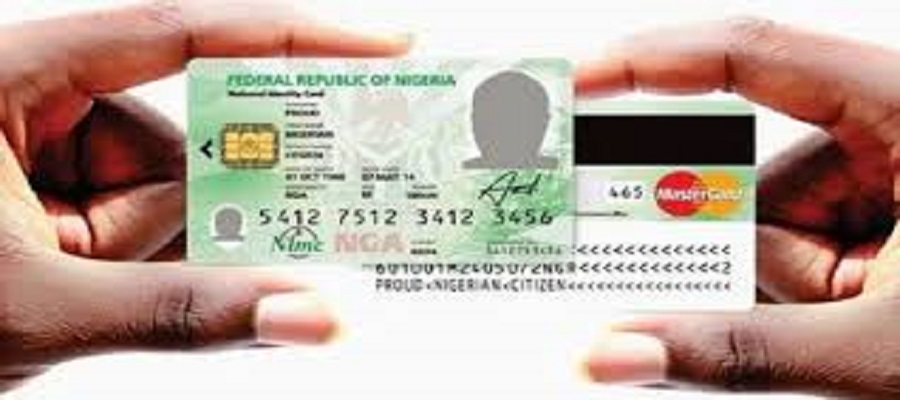E-Business
The Importance of Security Operations Centers to Contemporary Organizations

As organizations grow more dependent on IT solutions, they have also become potential subjects of cyber threats. These threats vary in terms of the risk they portend for their targets; the more lethal ones could inflict costly damage on their victims.

Businesses, public sector concerns, and other institutions have responded by taking proactive measures to prevent these threats from being actualized. In some cases, the creation of a Security Operations Center sits at the core of their strategy.
What Is a Security Operations Center?
A Security Operations Center (SOC) is a unit that’s built to tackle the security issues of an organization. It consists of the personnel, technologies, and processes that are required to maintain the organization’s security status.
The personnel at a Security Operations Center include members of the IT team who are adequately skilled at identifying and dealing with threats. The SOC’s processes involve monitoring, detecting, analyzing, and responding to threats.
Technologies used at a SOC are built to scour networks, servers, endpoints, websites, and databases for signs that such systems have been compromised. They also include tools that help with reporting such incidents.
In other words, the SOC serves as a point at which events logged throughout an institution are monitored. This setup works through the data and determines whether there are threats, and how to defend the organization against such threats where they exist.
The Functions of a Security Operations Center
As has already been hinted, a Security Operations Center needs to have visibility into the various aspects of the assets it is supposed to protect. It should also track the networked interaction between these assets, including software, endpoints, and servers.
Also part of the SOC’s mandate is preparation for possible attacks. To do this successfully, teams within the SOC will have to keep tabs on the latest developments in cybersecurity, such as emerging threats and best practices for defending systems against them. Vulnerabilities should be patched, firewalls updated, and applications secured.
Monitoring systems with tools such as Endpoint Detection and Response (EDR) and Security Information and Event Management (SIEM) is standard practice for SOCs. The EDR continuously collects and analyzes activity data from endpoints throughout the organization, and provides automated responses to perceived irregularities within these data that may signal an imminent attack. SIEM similarly gives SOC personnel insights into activities in their IT environment.
In addition to these, the Security Operations Center also ranks security alerts, discerns genuine risks from false positives, responds to threats (by shutting down or isolating compromised endpoints, etc.), and carries out recovery and remediation following an attack.
The Structure of a Security Operations Center
Given its various duties, the SOC is ideally staffed with multiple IT security professionals, each playing a specific role within the setup.
A manager, who leads the team, should coordinate and oversee the processes ongoing within the SOC. They should also be able to fill any of the roles there. An analyst collects and analyzes past data or data generated after a breach has occurred.
Another role, the investigator, involves assessing a breach and answering questions about how and why the event occurred. They may also take on the role of the incidence responder, who takes action to minimize the impact of breaches.
One person could play multiple roles; it all depends on how big the organization affected is.
The structure of the SOC should be documented, with each role defined, and questions around responsibility and collaboration answered. Security processes that ought to be defined include monitoring, alerting, escalation, investigation, incident logging, compliance monitoring, and reporting.
Benefits of a Security Operations Center
An immediately perceivable benefit of the SOC is that knowledge is centralized. Personnel at the SOC gain a bird’s eye view of their organization’s networks and are better able to spot vulnerabilities. This setup lets them share vital information so that their work is more coordinated and ultimately effective.
This approach to security may reduce running costs as well. With the cybersecurity team and infrastructure in one location, resources are concentrated in one place at a given time. Because they are in a single location, organizations don’t have to spend more to maintain various offices across different locations.
Centralization may also help improve collaboration between members of the IT security team. They can leverage each other’s expertise and experience, and develop solutions that help their parent company in many ways.
With greater team collaboration comes improved response times. The use of advanced tools for threat detection and monitoring strengthens this benefit even more. With proactive network and endpoint monitoring tools, it’s even possible to protect against cyber threats before they materialize.
Finally, there’s the round-the-clock protection that SOC affords. Because attacks aren’t limited to working hours during weekdays, SOCs are built to monitor for potential vulnerabilities every hour of every day.
An Option Worth Considering: Managed Security Operations Center
Not all businesses are able to set up a functional SOC. The expertise, experience, tools, and space required to run it may constitute a drain on resources, besides forcing the business to take on additional tasks to its core operations.
Managed SOCs are a solution to this problem. Cybersecurity firms often offer this as a service to their client organizations. This means that businesses don’t need to have a large department dealing with security issues. Signing up with a reputable cybersecurity firm will allow them to have a SOC with that firm, and focus on their core operations.
Layer3 can help you manage your company’s IT security. We do this by leveraging the expertise and experience of our cybersecurity experts, and our knowledge of the present and emerging risks that enterprises face in today’s world. These, combined with our advanced threat detection and security intelligence tools and systems, will take care of the things you would typically assign to an in-house SOC. This guarantees cost savings for your organization and lets you devote more time and resources to your principal operations.
If you would like to learn more about our IT security service offerings, you can get in touch with us here.
E-Business
Microsoft Servers Hacked by Chinese Groups

Chinese “threat actors” have hacked Microsoft’s SharePoint document software servers and targeted the data of the businesses using it, the firm has said.

China state-backed Linen Typhoon and Violet Typhoon as well as China-based Storm-2603 were said to have “exploited vulnerabilities” in on-premises SharePoint servers, the kind used by firms, but not in its cloud-based service.
The US tech giant has released security updates in response and has advised all on-premises SharePoint server customers to install them.
“Investigations into other actors also using these exploits are still ongoing,” Microsoft said in a statement.
The firm said it had “high confidence” the hackers would continue to target systems which have not installed its security updates.
It added that it would update its website blog with more information as its investigation continues.
Microsoft said it had observed attacks in which hackers had sent a request to a SharePoint server “enabling the theft of the key material by threat actors”.
Charles Carmakal, chief technology officer at Mandiant Consulting firm, a division of Google Cloud, told reporter, it was “aware of several victims in several different sectors across a number of global geographies”.
Carmakal said it appeared that governments and businesses that use SharePoint on their sites were the primary target.
A number of adversaries who stole material encoded by cryptography were then able to regain ongoing access to the victims’ SharePoint data, he said.
“This was exploited in a very broad way, very opportunistically before a patch was made available. That’s why this is significant,” Carmakal said.
Carmakal said the “China-nexus actor” was deploying techniques similar to previous campaigns associated with Beijing.
Microsoft said Linen Typhoon had “focused on stealing intellectual property, primarily targeting organizations related to government, defence, strategic planning, and human rights” for 13 years.
It added that Violet Typhoon had been “dedicated to espionage”, primarily targeting former government and military staff, non-governmental organizations, think tanks, higher education, the media, the financial sector and the health sector in the US, Europe, and East Asia.
Meanwhile, Storm-2603 was “assessed with medium confidence to be a China-based threat actor”.
E-Business
NIMC Warns Nigerians of Fake NIN Website

National Identity Management Commission (NIMC) has issued a public warning that it is not associated with NINcard.com.

According to the commission, the website has been circulating online to offer services for Nigerians seeking National Identification Number (NIN) services.
NIMC, in a post on its official X account on Wednesday, said, “NINcard.com is not in anyway affiliated to NIMC. Stay vigilant!”
The warning was accompanied by screenshots of fake payment receipts and OTP request pages from the website, both of which were boldly stamped “FAKE” by NIMC to alert the public.
E-Business
NITDA, API Partner Against Harmful Online Content

National Information Technology Development Agency (NITDA), in partnership with the Advocacy for Policy and Innovation (API), has convened a one-day workshop in Abuja to advance dialogue on the draft Online Harm Protection (OHP) Bill to confront harmful online content.

The bill, a rights-based, locally rooted, and multi-stakeholder initiative, is aimed at addressing the challenges of the digital age.
The event, which held yesterday, brought together government officials, civil society, academics, digital platforms, and legal experts to shape a policy framework designed to combat online ills such as cyberbullying, disinformation, hate speech, digital exploitation, and gender-based violence, while safeguarding democratic freedoms and digital inclusion.
In his keynote remarks, Kashifu Inuwa, director general, NITDA urged a paradigm shift in the way society engages with digital technologies.
“For almost two decades, we have viewed digital technology through a consumer lens. But these technologies are not just products and services. They are transforming how we live, work, and interact. They shape our politics, our society, and our democracy,” he said.
Warning against unaccountable digital power in the hands of private corporations, the DG likened the digital journey to the tale of Alice in Wonderland, where initial fascination with innovation has given way to deeper concerns about privacy, autonomy, and manipulation by big tech platforms.
“We thought we were using Google, but now we realise Google is using us. Social media, once a tool of expression, has become a tool of surveillance and influence,” Inuwa noted.
He, therefore, emphasised the urgency of developing a democratic and accountable framework. He explained that following the 2021 Twitter ban, NITDA facilitated dialogue between the government and platform operators, leading to a Code of Practice that stressed Nigeria’s sovereignty and legal standards.
According to him, the same process birthed the multi-stakeholder steering committee and the OHP White Paper in December 2024, laying the foundation for the current legislative push.
Earlier in her opening remarks, Victoria Manya, co-founder, API, observed the moral and civic necessity of the bill.
Her words: “The internet did not break society, it merely revealed its unfiltered version. Every day, Nigerians are exposed to harassment, disinformation, exploitation, and even algorithmic violence. The OHP Bill is not a war on the Internet. It is a peace offering to its users, a social contract for a digital future that is safe, inclusive, and democratic.
“We cannot answer the question of algorithmic power with unchecked state control. We must answer it with shared, rights-based governance. This bill must not be written for the people, but with them.”

 E-Financial3 days ago
E-Financial3 days agoKuda Unveils New Wallet for Multiple Currencies

 Telecom3 days ago
Telecom3 days agoTelcos Resume SIM Card Sales after 2-Week Halt

 Telecom3 days ago
Telecom3 days agoNigeria, Others Achieve 84% Adult Mobile Phones Penetration

 E-Business3 days ago
E-Business3 days agoHow AI Alert by Airtel is Transforming Mobile Security in Africa

 E-Business3 days ago
E-Business3 days agoNITDA, API Partner Against Harmful Online Content

 Telecom2 days ago
Telecom2 days agoGlo Launches Nigeria’s First-of-its-kind Device Protection Plan

 Telecom2 days ago
Telecom2 days agoTelcos: How and Why Network Services have Been Poor

 News3 days ago
News3 days agoHorn of Africa Leaders Seek Enhanced Digital Integration for Increased Regional Growth

























